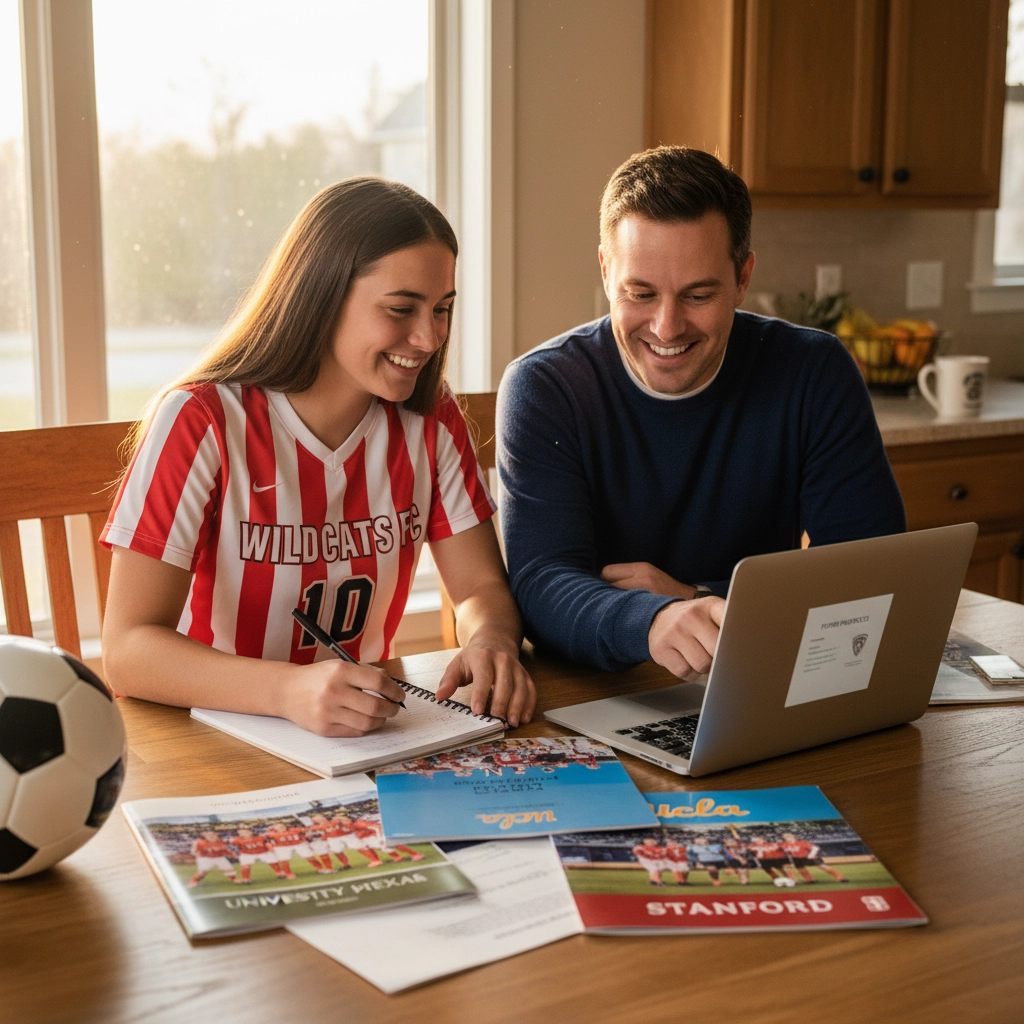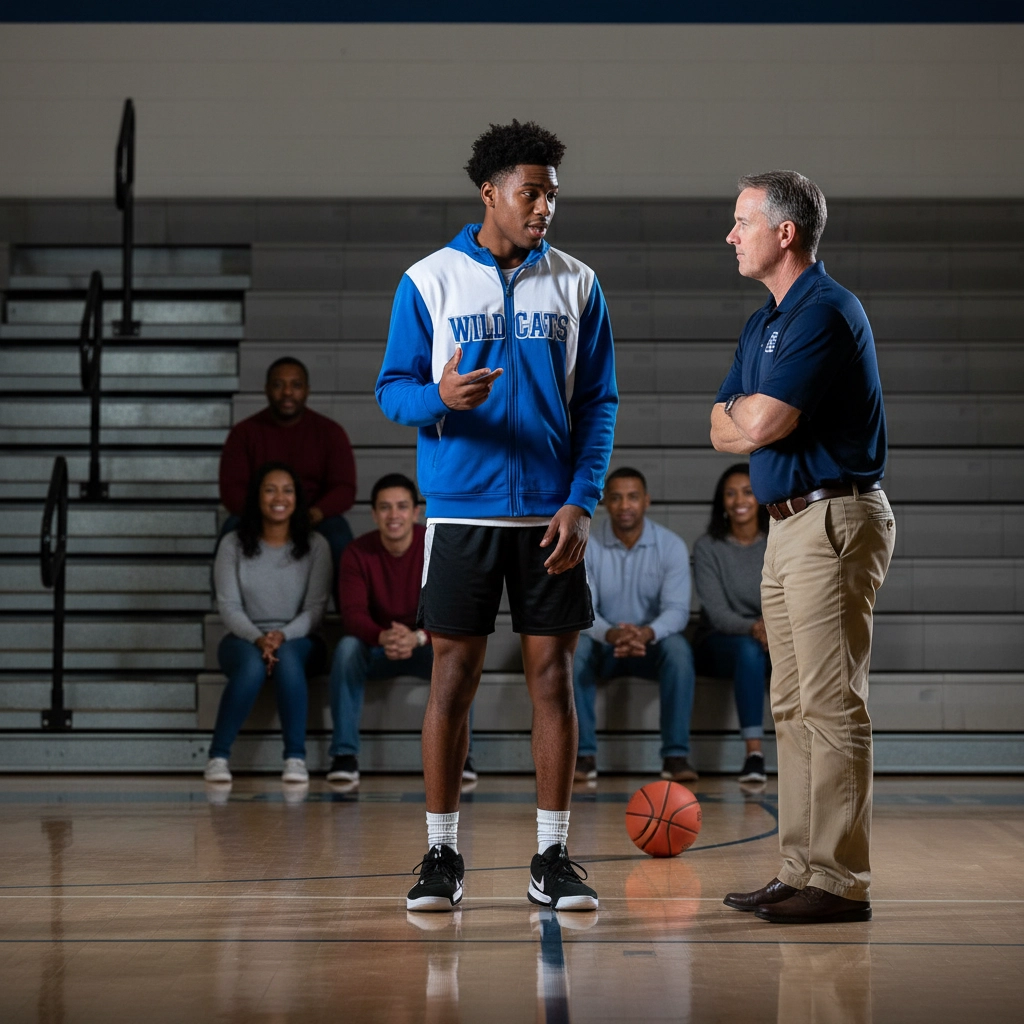We've all seen both extremes: parents who write every email to coaches and parents who completely step back, leaving their 16-year-old to navigate college recruiting alone.
The truth? Both approaches can sabotage your athlete's recruiting success, but for different reasons. Let's break down what actually works in today's recruiting landscape.
The Helicopter Parent Playbook: High Involvement, High Risk
Helicopter parents in recruiting are easy to spot. They're the ones sending follow-up emails to coaches, creating spreadsheets of every possible opportunity, and often speaking for their athlete during conversations with recruiters.
Why Parents Choose This Approach
The motivation makes sense. College recruiting is complex, competitive, and intimidating. Parents see their knowledge, networks, and experience as advantages their athlete needs to compete. They worry that stepping back means missing crucial opportunities or letting their athlete make costly mistakes.
The Strengths
Let's be fair: helicopter parents often get things done. They research extensively, maintain detailed records, and ensure no deadlines are missed. Their athletes rarely fall through recruiting cracks due to poor organization or communication gaps.
Some helicopter parents also bring valuable resources to the table. Professional networks, industry connections, and financial means to attend showcases and camps can open doors that wouldn't otherwise exist.
Where It Backfires
Here's the problem: coaches aren't just evaluating athletic ability. They're assessing character, maturity, and coachability. When parents become the primary point of contact, it sends concerning signals about the athlete's independence and communication skills.
College coaches have specifically cited over-involved parents as red flags during recruiting. If an athlete can't send their own emails, handle direct questions, or express genuine interest in a program, coaches question whether they're ready for college athletics.

The Real Cost
Beyond immediate recruiting concerns, helicopter parenting can stunt an athlete's development of crucial life skills. Athletes who haven't learned to advocate for themselves, handle rejection, or make decisions independently often struggle with the transition to college athletics.
The Hands-Off Philosophy: Independence at What Cost?
On the opposite end, hands-off parents believe recruiting should be entirely athlete-driven. They provide minimal guidance, expecting their teenager to research schools, contact coaches, and manage the entire process independently.
The Logic Behind Hands-Off
These parents want to develop their athlete's self-reliance and ensure authentic relationships with coaches. They believe that if an athlete is truly ready for college, they should handle recruiting themselves.
What Works Well
Athletes who manage their own recruiting often develop stronger communication skills and demonstrate genuine interest to coaches. Their interactions feel more authentic because they actually are. These athletes also tend to make better college choices since they're based on personal fit rather than parental preferences.
The Critical Gaps
The major flaw in the hands-off approach is assuming teenagers have the knowledge and maturity to navigate a complex system without guidance. Most high school athletes don't understand NCAA eligibility requirements, recruiting timelines, or effective communication strategies with coaches.
Without proper support, talented athletes can miss opportunities simply because they don't know how to market themselves effectively or when to take action. The recruiting process has specific windows and protocols that aren't intuitive to most teenagers.
What Actually Works: Strategic Support Without Takeover
The most successful recruiting families find a middle ground that combines parental expertise with athlete ownership of the process.
Setting Clear Boundaries
Start by establishing who handles what. Generally, the athlete should be the primary communicator with coaches, while parents provide behind-the-scenes support with research, logistics, and strategic planning.
Parents can help identify target schools, review communications before they're sent, and ensure their athlete understands important deadlines. But the athlete's voice should be the one coaches hear consistently.
Teaching, Not Doing
Instead of writing emails for your athlete, help them craft their own messages. Review what they've written, suggest improvements, and gradually reduce your involvement as their skills develop. This approach builds competency while ensuring quality communication.
When to Step In
There are times when direct parental involvement is appropriate and even expected. Contract negotiations, official visits logistics, and complex eligibility questions often require adult oversight. The key is knowing when your involvement adds value versus when it creates concerns.

The Coach's Perspective: What Recruiters Really Want
College coaches have been clear about their preferences when it comes to parental involvement. They want to recruit athletes who can:
Communicate directly and professionally
Express genuine interest in their program
Handle questions without parental prompts
Demonstrate maturity and independence
Show personal investment in the recruiting process
This doesn't mean parents should be invisible. Coaches expect parents to be involved in major decisions and logistics. But they want the athlete to drive the relationship.
Red Flags for Coaches
Coaches report several parental behaviors that raise concerns:
Parents answering questions directed at the athlete
Emails sent from parent accounts on behalf of the athlete
Parents negotiating without athlete input
Overly aggressive advocacy that crosses professional boundaries
Athletes who seem disconnected from their own recruiting process
Building Your Family's Recruiting Strategy
Every family's situation is different, which means your approach should be customized based on your athlete's maturity level, the sport's recruiting timeline, and your family's resources and knowledge.
For Younger Athletes (Freshmen/Sophomores)
Start with higher parental involvement while actively building your athlete's skills. Help them understand the recruiting landscape, create their first communications with coaches, and establish good organizational habits. Gradually increase their independence as they demonstrate competency.
For Older Athletes (Juniors/Seniors)
Your athlete should be leading most interactions at this point. Your role becomes more consultative: reviewing major decisions, providing strategic input, and handling logistics that require adult involvement.
For Highly Recruited Athletes
When multiple coaches are actively recruiting your athlete, some parental involvement in managing communications and visits becomes necessary. The key is maintaining your athlete as the primary relationship builder while you handle coordination.

For Under-Recruited Athletes
These situations may require more parental involvement in identifying opportunities and helping your athlete understand how to market themselves effectively. But even then, the communications should come from your athlete.
Digital Tools That Support Both Approaches
Modern recruiting technology can help families find the right balance between involvement and independence. Platforms like Recruit My Game allow athletes to create professional profiles while giving parents visibility into the process.
Athletes maintain ownership of their recruiting communications and profile management, while parents can track progress and provide input without taking over. This approach satisfies coaches' desire to interact with athletes directly while ensuring families don't miss important opportunities.
Key Features That Matter
Look for platforms that enable:
Athlete-controlled communication with coaches
Parent visibility into recruiting activity
Professional profile creation with family input
Organization of recruiting opportunities and deadlines
Analytics to track engagement and success
The Bottom Line: It's About Balance, Not Extremes
Successful recruiting isn't about choosing between helicopter parenting and complete hands-off approaches. It's about finding the right level of support that develops your athlete's independence while leveraging your family's resources and experience.
Your athlete needs to own their recruiting process, but they also need your guidance, support, and advocacy at appropriate times. The goal is raising recruitable athletes who are also prepared for the independence that college athletics demands.
Remember that recruiting is ultimately about fit: between your athlete and the right program. That fit is best determined when authentic relationships develop between athletes and coaches, supported by families who understand when to step in and when to step back.
The families who get this balance right see better recruiting outcomes and athletes who are better prepared for college success. It's not about perfect parenting: it's about strategic parenting that serves your athlete's long-term development and recruiting goals.

